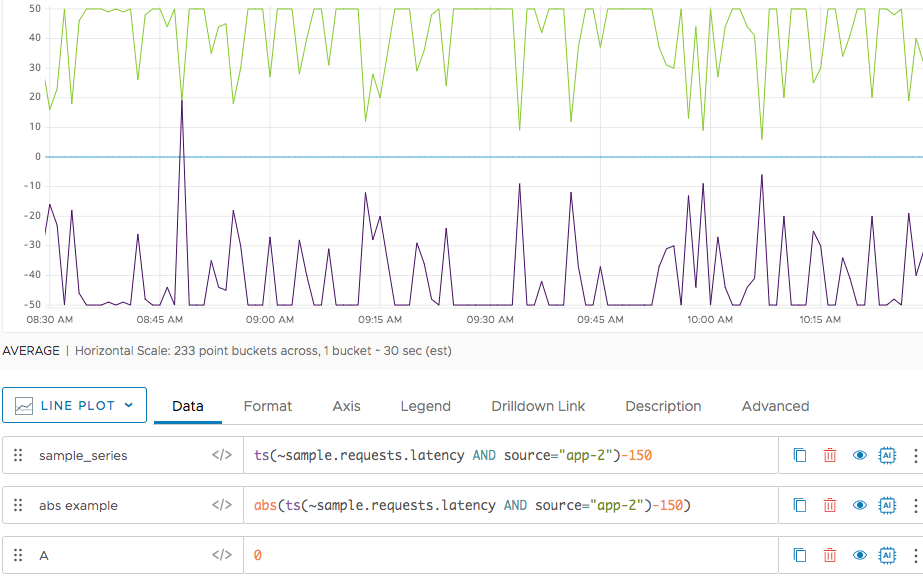Summary
abs(<tsExpression>)
Returns the absolute value of the time series described by the expression.
Parameters
| Parameter | Description |
|---|---|
| tsExpression | Expression describing the time series for which you want the absolute value. |
Description
The abs() function returns the absolute value of each data value in the time series described by the expression. abs() returns a separate series of results for each such time series.
If the data points of a time series fluctuate between positive and negative values, you can apply the abs() function to display each data point as an absolute value (the distance from zero).
Examples
Suppose that you have a time series that includes three data points: 2, -1, and -9. If you apply the abs() function to the series, these data points are displayed as 2, 1, and 9.
The following example shows how abs() displays a corresponding positive value for each negative value in the chart. We’ve included a line for 0 to illustrate how the function works.
